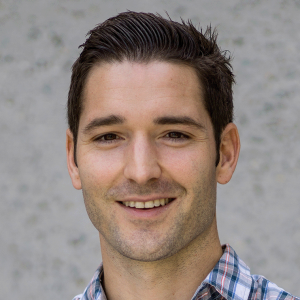
Ph.D.
Assistant Professor
Biochemistry - School of Medicine
Research at a glance
Area(s) of Expertise
Research Summary
Molecular Biophysics; structural and computational biology, cryo-electron microscopy (cryo-EM), structural immunology, vaccine design, glycoproteins, lipoproteins, atherosclerosis
The Berndsen Lab focuses on utilizing and developing state-of-the-art cryo-electron microscopy (cryo-EM) techniques in combination with other biochemical, molecular, and computational tools to interrogate the structure and function of important biomolecular systems within the context of human disease. Our aim is to create bridges between basic and translational science with the goal of making discoveries that will both strengthen our fundamental understanding of these systems and accelerate the development of potentially life-saving therapies. To do so, we will not only rely on internal expertise but engage in extensive collaboration with other research laboratories both on the Mizzou campus and around the world.
Structural Immunology and Structure-based Vaccine Design
We are interested in understanding the structural basis of immune recognition of diverse viral and bacterial antigens following natural infection or vaccination. When a virus or bacteria invades its host a huge diversity of antibodies are created which recognize biomolecules produced by the pathogen and either mark it for destruction or prevent it from infecting host cells. Critical to this recognition are the specific interactions between the antibodies and their biomolecular targets. Cryo-EM has rapidly become the technique of choice for studying the atomic details of these antibody-antigen interactions and has dramatically accelerated the pace of research in this area. A highly relevant example is the development of the SARS-CoV-2 vaccine, where cryo-EM structures were directly used to design the pre-fusion stabilized Spike protein and to rapidly assess the diversity of antibody responses from both vaccination and natural infection, which has aided the design of new vaccines and monoclonal antibody therapies.
Glycoprotein Structure and Function
Many of the viral and bacterial antigens we study are extensively glycosylated, meaning they are modified post-translationally with covalently attached sugar molecules. It is becoming increasingly apparent that these glycans play critical roles in a wide variety of phenomena and can dramatically affect protein structure and function. Despite this, their size, flexibility, and compositional heterogeneity has significantly complicated the structural analysis of glycoproteins by traditional methods. Again, cryo-EM has emerged as the premier experimental tool for studying glycoprotein structure because of its remarkable capabilities for overcoming and deciphering the various types of molecular heterogeneity inherent to these biomolecules. As a synergistic pursuit to our goals of understanding immune recognition, we will explore protein glycosylation and how it modulates the structure and function of these important viral and bacterial proteins with the aim of designing better immunogens and discovering foundational principles that will apply to glycoproteins more broadly.
Low Density Lipoprotein Structure
Low density lipoprotein (LDL) is responsible for transporting cholesterol and triglycerides through the blood from the gut and liver to the peripheral tissue where they are needed for a wide variety of biological processes. It is perhaps most well-known, however, for its role in the development of atherosclerosis, where aberrant absorption into the arterial lining ultimately leads to plaque formation. Despite the foundational role of LDL particles in both lipid metabolism and cardiovascular disease, their structures are still poorly understood at the molecular level because of their size and heterogeneous nature. We will utilize cryo-EM in conjunction with other biophysical techniques to study the structure of LDL particles across a wide range of conditions with the goal of obtaining high-resolution models of their protein components in order to understand how they interact with cellular receptors and control LDL morphology during normal cellular functioning and in the context of disease.
Educational background
- Ph.D. Biochemistry, University of California San Diego
- B.A. Biochemistry, DePauw University